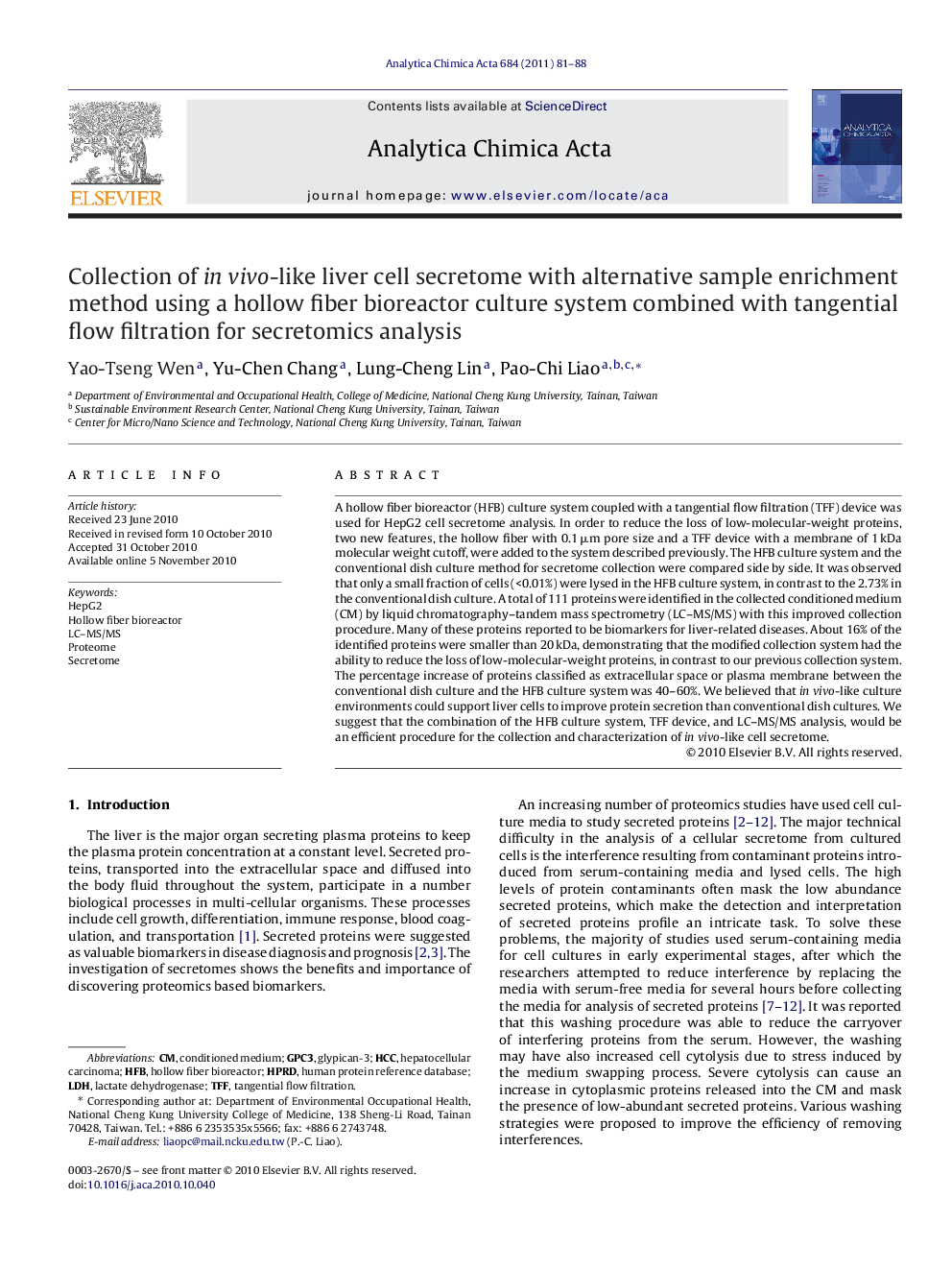| Article ID | Journal | Published Year | Pages | File Type |
|---|---|---|---|---|
| 1167575 | Analytica Chimica Acta | 2011 | 8 Pages |
A hollow fiber bioreactor (HFB) culture system coupled with a tangential flow filtration (TFF) device was used for HepG2 cell secretome analysis. In order to reduce the loss of low-molecular-weight proteins, two new features, the hollow fiber with 0.1 μm pore size and a TFF device with a membrane of 1 kDa molecular weight cutoff, were added to the system described previously. The HFB culture system and the conventional dish culture method for secretome collection were compared side by side. It was observed that only a small fraction of cells (<0.01%) were lysed in the HFB culture system, in contrast to the 2.73% in the conventional dish culture. A total of 111 proteins were identified in the collected conditioned medium (CM) by liquid chromatography–tandem mass spectrometry (LC–MS/MS) with this improved collection procedure. Many of these proteins reported to be biomarkers for liver-related diseases. About 16% of the identified proteins were smaller than 20 kDa, demonstrating that the modified collection system had the ability to reduce the loss of low-molecular-weight proteins, in contrast to our previous collection system. The percentage increase of proteins classified as extracellular space or plasma membrane between the conventional dish culture and the HFB culture system was 40–60%. We believed that in vivo-like culture environments could support liver cells to improve protein secretion than conventional dish cultures. We suggest that the combination of the HFB culture system, TFF device, and LC–MS/MS analysis, would be an efficient procedure for the collection and characterization of in vivo-like cell secretome.
